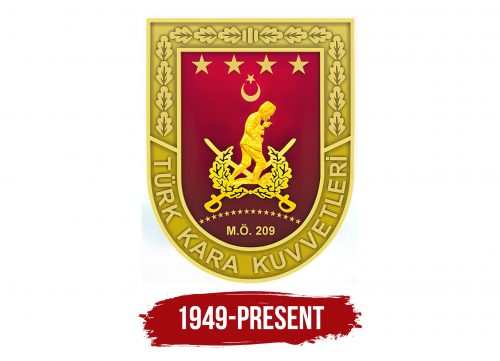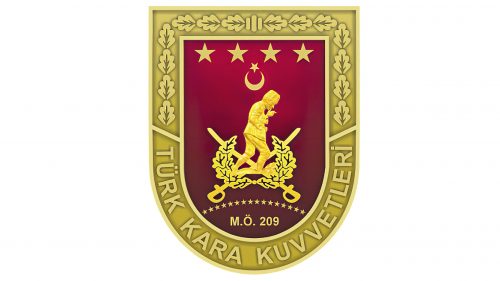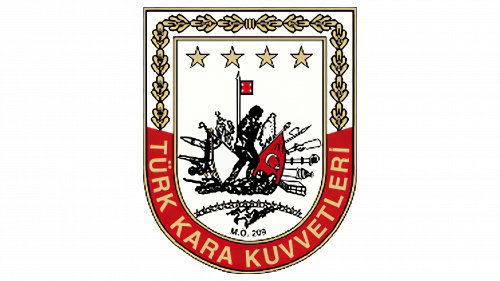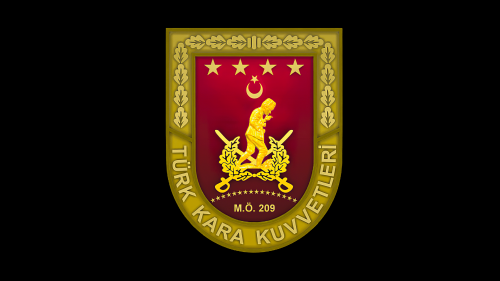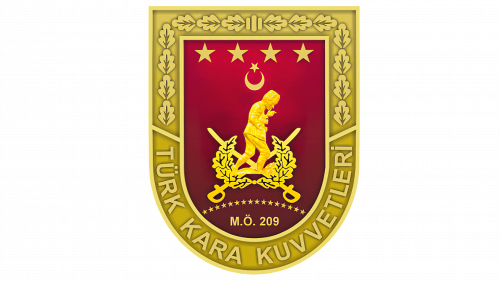 Kara Kuvvetleri Komutanlığı Logo PNG
Kara Kuvvetleri Komutanlığı Logo PNG
The logo of Kara Kuvvetleri Komutanlığı (Command of the Turkish Land Forces) corresponds to the emblem of Türk Kara Kuvvetleri (Turkish Land Forces). Historically, they are closely intertwined despite their different times of origin. The official emblem conveys the deep roots of the army, associated with events that occurred even before our era.
Kara Kuvvetleri Komutanlığı: Brand overview
Meaning and History
The development of the Turkish army is incredibly active and ancient, starting in times before our era. However, the army of a unified state scale was formed on November 8, 1920, when the Ottoman Empire disappeared, whose symbols were adopted by modern military forces. Currently, the land forces are the main bulwark of the country’s armed forces and make up the majority of them. Each unit uses a common visual identity – essentially an emblem in the form of an elongated shield, which soldiers use for protection in battle. Designers have placed iconic signs on it, including Islamic ones, since Turkey practices this religion.
It should be noted that the logo of Kara Kuvvetleri Komutanlığı emerged in modern times, as it is associated with the establishment of the Command of Turkish Land Forces, founded in 1949. Before this period, the timeline of the existence of the Turkish army should be traced back to 209 BC (from the first land force) and the Ottoman army, whose symbols have been transferred to the military emblem. In particular, this includes two key symbols: the star and the crescent. There are several hypotheses regarding their appearance in military insignia.
- The first aspect is religion. In Islam, it is believed that the star and crescent are cult symbols, celestial and divine, and associated with light and independence.
- The second aspect is historical. The crescent on the Turkish flag emerged in the 15th century when Constantinople was captured. It directly embodies that distant and grand victory.
- The third aspect is utilitarian. Muslims use the lunar calendar (for holidays), where the traditional sign is a thin crescent, marking the beginning of the moon’s growth cycle and, consequently, the measurement of time.
- The fourth aspect is monarchical. The star and crescent are considered symbols of the Sultan Osman dynasty.
- The fifth aspect is legendary. There is a belief that after the battle at the Kosovo field ended, Ottoman soldiers saw stars and a moon in the sky, supposedly stained with the blood of the defeated enemy.
As a result, the main elements of the Kara Kuvvetleri Komutanlığı emblem became stars, a crescent, a warrior, crossed sabers, and leaves of the most powerful and robust tree in Turkey, its national symbol – the oak.
What is Kara Kuvvetleri Komutanlığı?
Kara Kuvvetleri Komutanlığı is the administrative body of the country’s main type of armed forces – Türk Kara Kuvvetleri, designated for conducting ground military operations. The Command (Komutanlığı) was established during the formation of the Army of the Grand National Assembly of Turkey in the summer of 1949. Whereas the Türk Silahlı Kuvvetleri (Armed Forces of Turkey) themselves appeared in 209 BC. The headquarters are located in Ankara.
1949 – today
The logo is designed in the shape of a heraldic shield, outlined along the edges with a wide golden frame. At the center, against a burgundy background with a gradient (the red color is lighter at the top than the bottom), a warrior is depicted, bowing his head. He stands on two crossed sabers, the hilts of which, like the man himself, are painted in a light yellow (warm sunny shade). Resting on the blades of the cold weapons is an oak wreath, symbolizing a striving for peace, not war, as the Turkish oak is the national tree.
In the lower part, sixteen miniature five-pointed stars are arranged in a semicircle. They separated the year the Turkish army was founded – 209 BC. Above are four more stars, but larger, arranged in a single horizontal line. Below them is the main national symbol, borrowed from the Turkish flag – the union of the star and crescent. On the frame, there are carved oak leaves and the inscription “Türk Kara Kuvvetleri,” which translates as “Turkish Land Forces.”
Font and Colors
The name of the Turkish forces is typed in a sans-serif font in uppercase. The precise angles of the letters make them look very strict, emphasizing the official style of the inscription. Some glyphs have roundings, balancing the businesslike design.
Despite the national colors of Turkey being white and red, the Kara Kuvvetleri Komutanlığı logo predominantly features burgundy and gold. The first represents spilled blood, and the second – is undying glory.
